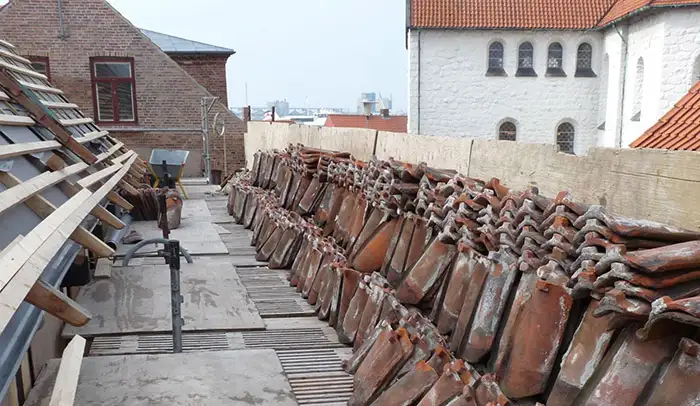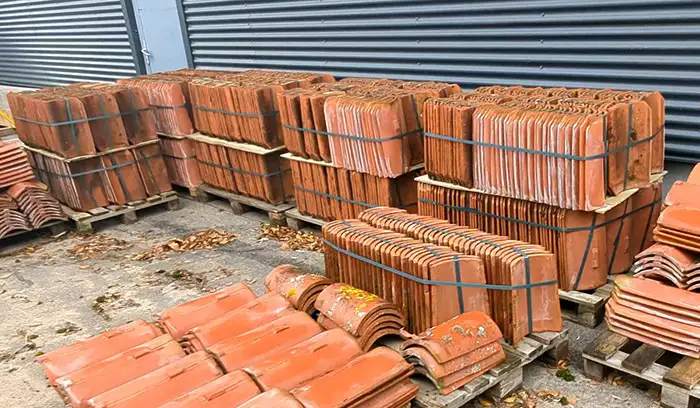Roof tiles
Clay roof tiles have several favorable characteristics, including a long lifespan, sturdy durability, excellent adaptability, and, notably, significant potential for reuse. These qualities make clay roof tiles a high-quality product.

There has likely been little consideration given to incorporating design for disassembly into many existing roof structures where clay roof tiles have been used. Nevertheless, the majority of roof constructions using clay roof tiles are designed in a way that allows for the separation of structures, enabling the tiles to be removed intact and reused elsewhere.
The favorable possibilities arise from the fact that most roof constructions with clay roof tiles are assembled in ways that make them relatively easy to disassemble. The clay roof tiles are fastened to a batten substrate with steel ties that can be easily loosened. Ridge tiles may be either masonry-bonded or screwed on. In cases where ridge tiles are mortared together, relatively weak lime mortars are often used, making them easy to clean. In cases where ridge tiles are screwed together, they can be unscrewed for disassembly.

During dismantling, it is essential to handle the roof tiles appropriately. The tiles should be carefully removed, bundled up for easy handling, transportation, and laying on a new roof. This should be considered from the outset of the dismantling process to avoid costly procedures.
